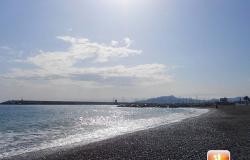TRENT. The study meeting “Making Copper 2. The pre-protohistoric primary metallurgy of Trentino, between the Alps and the Apennines” addresses one of the salient aspects of the prehistory of Trentino, the extraction and processing of copper between the Eneolithic and the Bronze Age. , scheduled in Trento from June 20th to 22nd. The event is organized by the Archaeological Heritage Office of the UMST Provincial Superintendency for Cultural Heritage and Activities in collaboration with the MUSE – Science Museum and the Trento Chamber of Commerce and with the patronage of the Italian Institute of Prehistory and Protohistory .
The works will be opened by the vice-president and councilor for education, culture and sport, policies for the family, for young people and for equal opportunities of the Autonomous Province of Trento, Francesca Gerosa and by the general manager of the UMSt Superintendence,
Franco Marzatico. The study meeting, organized by Paolo Bellintani, Elena Silvestri and Elizabeth Mottes of the Provincial Archaeological Heritage Office, is dedicated to the memory of Anna Maria Bietti Sestieri, internationally renowned archaeologist, among the leading experts in Italian protohistoric metallurgy. The conference program also includes an outing in the area with a guided visit to the pre-protohistoric mining area of Vetriolo, already reported in the 1960s and recently rediscovered following the upheavals of the Vaia storm.
Participation is free until all available places are filled, subject to compulsory registration online on the website https://farerame2.wixsite.com/trento2024 by June 16th.
For those who are unable to participate in person, the meeting can be followed remotely.
The extraction and processing of copper occupy a prominent place in the prehistory of Trentino, as evidenced by the Vetriolo mine and the over 200 local mineral processing sites (in particular chalcopyrite) brought to light by archaeologists in the Valle dell’ Adige, in Valsugana and in Primiero. The research conducted in the area, in addition to highlighting the importance of the exploitation of copper deposits from the 3rd and during the 2nd millennium BC, is at the center of a debate on the origin of the metal and the role of metallurgy in the social and economic development of communities Europeans between the Eneolithic and the Bronze Age.
The work of the “Fare Copper 2” study meeting, which will see the presence of scholars and specialists from Italian and foreign superintendencies, research institutes and universities, includes four sessions over the two days for a total of 19 interventions. While maintaining the focus on the Trentino reality, the conference aims to build a bridge between the mining reality of the southern side of the central-eastern Alps and that of central Tyrrhenian Italy.
The Trento event, in addition to being an important moment of discussion with the scientific community, intends to be an opportunity to return to the public an intense research and investigation activity conducted by the Provincial Archaeological Heritage Office. It also constitutes the ideal continuation of two other similar study meetings: “Making Copper. The primary metallurgy of the late Bronze Age in Trentino. New excavations, comparisons and state of the art”, held in Trento and Fiavé in 2013 and dedicated to the comparison between the mining regions of the two sides of the central-eastern Alps, and the conference In search of mines. Traces of exploitation of copper deposits in the Pre-Protohistory of the southern Alpine region held in Fiavé in 2021. During the latter, the volume “Making Copper. The primary metallurgy of the late Bronze Age in Trentino: new excavations and state of the art of field research”, available on the Trentino Cultura portal (www.cultura.trentino.it/Pubblicazioni/Fare-Rame).
An internationally renowned scholar of Italian and Mediterranean protohistory, archaeologist Anna Maria Bietti Sestieri, who passed away in 2023, is counted among the leading experts in Italian protohistoric metallurgy. For more than twenty years you worked at the Superintendence of Rome; she was then archaeologist superintendent of Abruzzo and manager for the Museums and Archaeological Parks sector at the Ministry for Cultural Heritage, concluding her career as a professor of European Protohistory at the University of Salento. Honorary life member of the British School at Rome and of the Institute for American Archaeology, corresponding member of the German Archaeological Institute, member of the Accademia Nazionale del Lincei and President of the Italian Institute of Prehistory and Protohistory from 2003 to 2009, in 1996 he received the Europa Prize from the Prehistoric Society, one of the most prestigious awards in the archaeological field.





